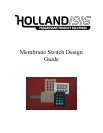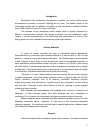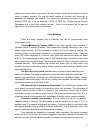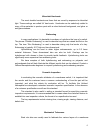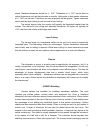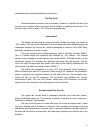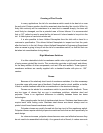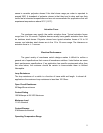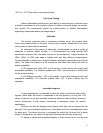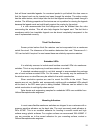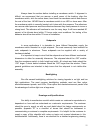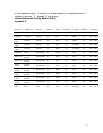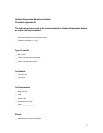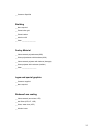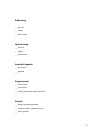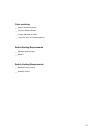5
switch. Standard tolerances should be +/- .015". Tolerances of +/- .010" can be held on
critical dimensions such as the perimeter or cutouts. Hole center to hole center tolerances
of +/- .005" can be held. Tolerances on very large parts will be greater. Tighter tolerances
can be held by laser cutting or with the use of hard tooling.
The switch layers under the overlay will typically be fabricated smaller than the
overlay. This allows for die cutting and assembly tolerances. All layers will typically be
.015" inset from the overlay at all edges and cutouts.
Laser Cutting
The various layers of a membrane switch can be cut out by using a numerically
controlled laser. This technology offers two advantages. Tighter mechanical tolerances
can be held, and no tooling is required. While laser cutting is a more expensive process
than die cutting, in many low and medium volume applications it is quite cost effective.
Pinouts
The schematic or pinout of a switch may be specified by the customer, but if it is
initially unimportant to the customer, then the pinout should be unspecified. As with any
circuit layout, more freedom will allow us to produce a more efficient layout. This has the
advantage of shorter development time and a simpler circuit layout, which could
nominally affect switch reliability. Membrane switches can be designed with a common
bus or in a matrix. Matrix layouts are desirable for keyboards with many keys to simplify
the interconnect.
ESD/RFI Shielding
Several options are available for shielding membrane switches. The most
common are printed carbon, printed silver, and aluminum foil. From a functional
standpoint, the main difference among these materials is their conductivity. Either carbon
or silver can be printed on the top of the top circuit to act as a shield. These shields have
the advantage of not adding any additional layers to the switch construction. Carbon
shields are less expensive than silver shields. Silver is usually printed in a grid pattern to
reduce cost. A layer of aluminum foil can also be added above the top circuit. This
material is the most conductive shield available. However, it does add two layers to the
switch construction. The shield is usually connected to the ground through the connector,
or by means of a tab with a slot for a fastener. The customer should express their
shielding requirements in Ohms per square inch. The entire product packaging must be



